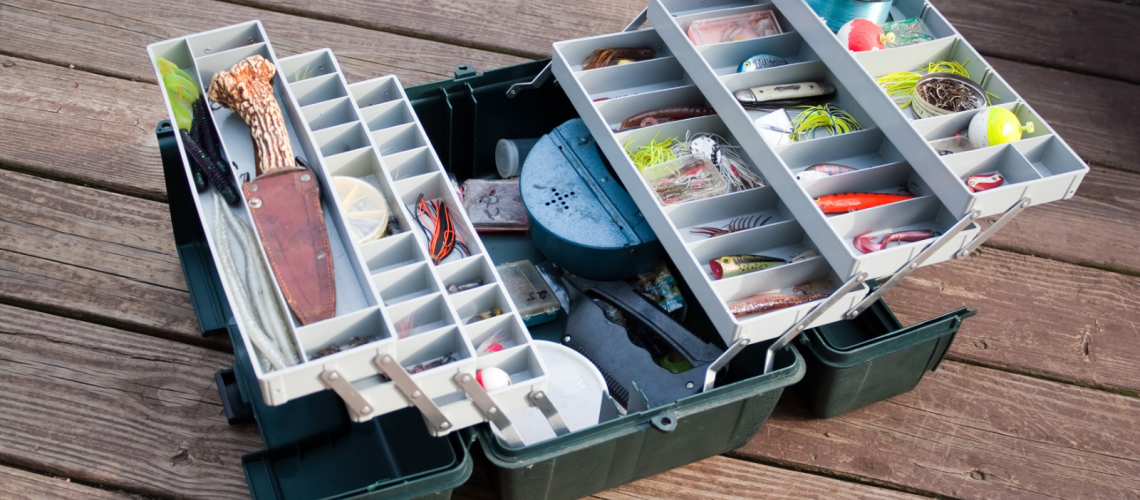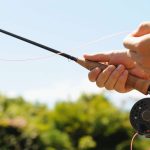Fishing lures and tackle gear come in many styles and sizes. As such, it won’t do to throw your bait in just any box or bag. Your approach to storage should generally take into account the size and hardness of the bait, hooks, and other tackle.
Great Freshwater Anglers Get Organized
Whether you’re assembling, building, repairing, or fishing, you need to ensure you have the right type and amount of gear. The organization helps you quickly get to the correct fuse, screw, nail, or fishing lure.
Where you fish or what you want to catch will determine the type of lure. For instance, in the deep part of a lake, you need a crankbait capable of going deep. With their ability to bounce like crawfish, football jigs can entice large, aggressive bass.
Being an organized angler also means the ability to find lures quickly and take care of your wares. In addition to storage methods, we’ll provide tips for labeling and cleaning.
Why Should You Have Waterproof Containers For Hard Baits
Hard baits come in zinc, copper, aluminum, other metals, plastic, and other hard materials. These metals provide durability and a smooth finish for cranks, minnows, deep divers, hard-bodied jigs, and premium hard spoons. With their appearance and strength comes the ability to attract fish with appetites.
To maintain the effectiveness of hard baits, you need a waterproof box. Plastic ones with an O-ring seal keep moisture away as you store lures through various elements. Humidity and moisture can rust hooks and other metal components without the seals and further waterproofing. Over time, inadequately protected hard baits lose their luster and even become cracked.
Should You Keep Soft Baits in a Tackle Box?
Soft plastics form wiggly baits, worms, shrimp, and other creatures. Unlike hard baits, the soft varieties more resemble fish food. Your soft lures will keep your potential catch around thanks to unique features such as having a smell.
Such lures can succumb to melting in hot temperatures. The liquid plastic becomes hardened in a plastic box.
For the soft baits, use a ziplock or freezer bag. Avoid opening the original packaging until you’re ready to fish.
What Is Best for Beads, Sinkers, and Other Small Fishing Supplies?
Pellets, beads, sinkers, and swivels can quickly become lost or intermingled without suitable containers. Tackle boxes with dividers can compartmentalize these small fishing supplies.
You can better organize these small supplies with small cups on which you can label the beads, hooks, pellets, or swivels. Look for the following:
- Small film canisters
- Diabetic test-strip bottles
- Mini tackle boxes
- Small or short storage tubes
- Small storage cups
These containers come from craft, hobby, or fishing stores. Houseware or kitchen aisles or stores may have small storage cups that you would otherwise use for sugar or powdered coffee creams. You might even find a mini or hand-held storage compartment box in a hardware store or department.
What Should You Use in Labeling?
Suitable labels can help you readily find the lures or supplies for specific types of fish or lakes in which you fish. With the small width or area of tubes or lids, consider codes for your labels. You can categorize by type of lure or bait and size. By way of suggestion:
- DT-4 Crankbait (for mid-depth fishing)
- DT-16 Crankbait (for deeper-water fishing)
- Min (Minnows)
- LZB (Lizard baits)
- POP (Poppers)
- BAS (Barrel Sinkers)
- BWLK (Bottom Walkers)
- DRSP (Doctor Spoons)
If you can write small enough, spell out the particular lure or bait. You may even locate preprinted labels from online vendors or a store specializing in fishing gear.
How Do You Clean Bait and Storage Devices?
By whatever means you store, keep the lures and the compartments clean and dry. Use toothbrushes or other small brushes with soft bristles to remove dirt and rust. Dry especially the metal lures and supplies to prevent oxidation and the onset of rust and deterioration. Wash and dry the tackle boxes, small containers, and tubes.





